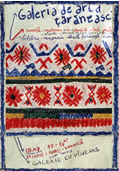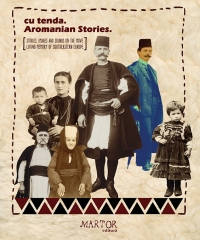ALEXANDRU TZIGARA-SAMURCAŞ
Born on April 4th 1872 in Bucharest in a family of small boyars, he goes to high school in Bucharest. In 1892 he is appointed custodian of the Antiquities Museum headed by Grigore Tocilescu. In 1893 he goes to study in Germany, at the München University, with King Carol’s support and Al. Odobescu’s advices; he studies art history there. He comes back to Romania and resigns from the Antiquity Museum in order to continue his studies in France and then, again, Germany, with an interest in museography. He studies with Wilhelm von Bode, a reformer of Berlin museums.
After finishing his studies he is appointed librarian and then director of the Carol I Foundation and professor in the Art History and Aesthetics Department of the Belle Arte School in Bucharest.
On October 1st 1906, Al. Tzigara Samurcaş is appointed director of the Museum of Ethnography, National Art, Decorative Art and Industrial Art renamed, in 1915, the National Art Museum Carol I. The new museum was temporarily hosted in the building of the former state coin factory on 3, Kiseleff Avenue, on the same spot where the palace of prince Mavrogheni used to be. From the beginning, Al. Tzigara-Samurcaş bases his museum on modern, scientific bases. His acquisitions considerably increase the collections, the main attraction being the house of Antonie Mogoş from Ceauru (Gorj) exhibited inside the museum.
A never-ending fight begins for acquiring the necessary funds to raise a new building (the current building of the museum). The plans where made in collaboration with the architect N. Ghica-Budeşti. To this purpose, he writes numerous newspaper articles that will be later gathered in his book “Romanian Museography” (1936). On June 30th, 1912 the foundation of the new building was laid. The construction was many times interrupted, so the building was only ready in 1941.
As long as he was director of the Museum, Al. Tzigara-Samurcaş lead a prodigious activity in connection with his other preoccupations: director of the Carol I Fundation and professor of art history and aesthetics in Cernăuţi. He writes articles on various topics, academic books, among which the ones on popular art are very important, holds conferences on the radio or at the Athenaeum, participates in international congresses and exhibitions. Al.Tzigara-Samurcaş becomes an important name in his field.
The situation becomes worse after the Second World War when the communist authorities dismiss him from the position of Museum director. In old age, sick and overly humiliated, the Father of the Museum on the Boulevard dies on April 1st, 1952.
Born on April 4th 1872 in Bucharest in a family of small boyars, he goes to high school in Bucharest. In 1892 he is appointed custodian of the Antiquities Museum headed by Grigore Tocilescu. In 1893 he goes to study in Germany, at the München University, with King Carol’s support and Al. Odobescu’s advices; he studies art history there. He comes back to Romania and resigns from the Antiquity Museum in order to continue his studies in France and then, again, Germany, with an interest in museography. He studies with Wilhelm von Bode, a reformer of Berlin museums.
After finishing his studies he is appointed librarian and then director of the Carol I Foundation and professor in the Art History and Aesthetics Department of the Belle Arte School in Bucharest.
On October 1st 1906, Al. Tzigara Samurcaş is appointed director of the Museum of Ethnography, National Art, Decorative Art and Industrial Art renamed, in 1915, the National Art Museum Carol I. The new museum was temporarily hosted in the building of the former state coin factory on 3, Kiseleff Avenue, on the same spot where the palace of prince Mavrogheni used to be. From the beginning, Al. Tzigara-Samurcaş bases his museum on modern, scientific bases. His acquisitions considerably increase the collections, the main attraction being the house of Antonie Mogoş from Ceauru (Gorj) exhibited inside the museum.
A never-ending fight begins for acquiring the necessary funds to raise a new building (the current building of the museum). The plans where made in collaboration with the architect N. Ghica-Budeşti. To this purpose, he writes numerous newspaper articles that will be later gathered in his book “Romanian Museography” (1936). On June 30th, 1912 the foundation of the new building was laid. The construction was many times interrupted, so the building was only ready in 1941.
As long as he was director of the Museum, Al. Tzigara-Samurcaş lead a prodigious activity in connection with his other preoccupations: director of the Carol I Fundation and professor of art history and aesthetics in Cernăuţi. He writes articles on various topics, academic books, among which the ones on popular art are very important, holds conferences on the radio or at the Athenaeum, participates in international congresses and exhibitions. Al.Tzigara-Samurcaş becomes an important name in his field.
The situation becomes worse after the Second World War when the communist authorities dismiss him from the position of Museum director. In old age, sick and overly humiliated, the Father of the Museum on the Boulevard dies on April 1st, 1952.
















.jpg)

.jpg)


.jpg)




.jpg)


.jpg)












(1).jpg)


















.jpg)
.jpg)







